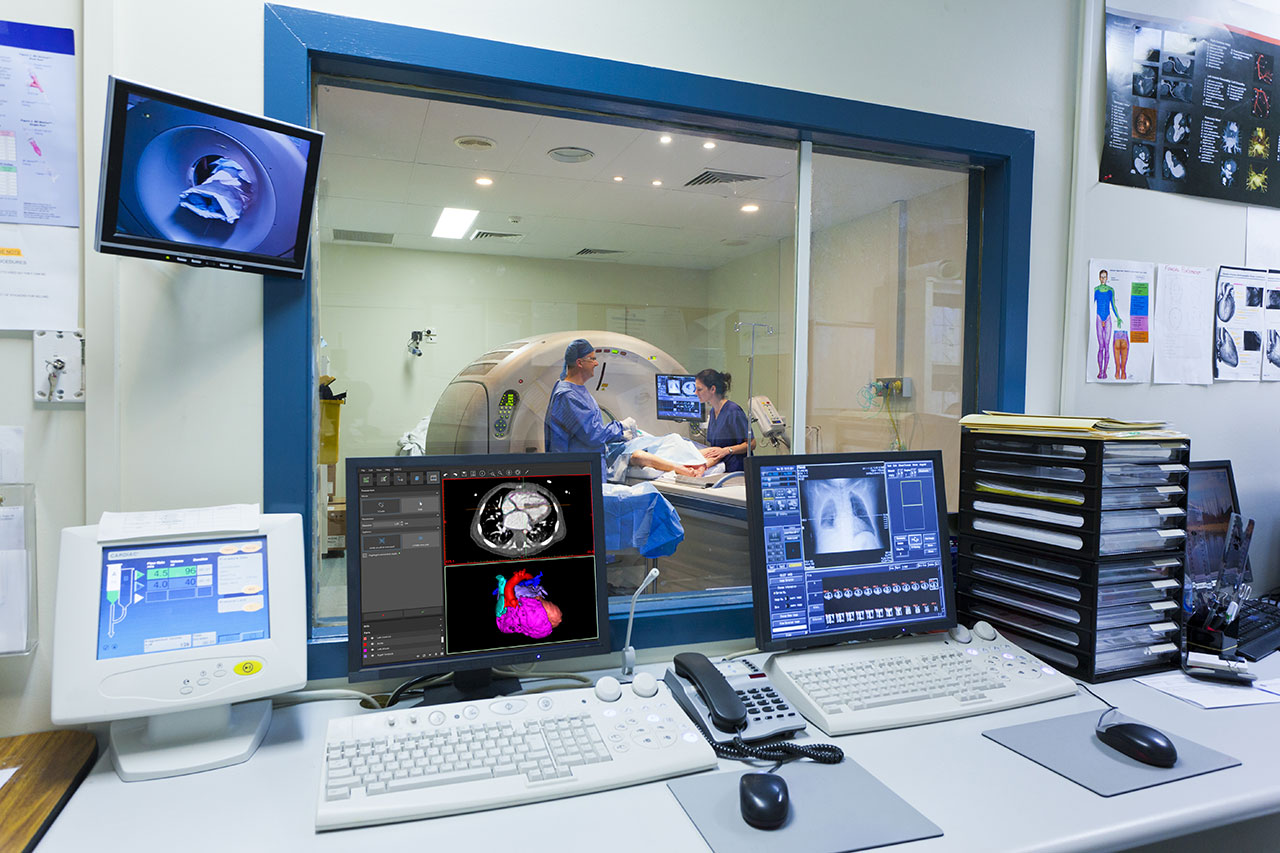Everywhere we turn, there’s some kind of 3D Printing application impacting our lives. It’s in art, jewelry, engineering, education, lifestyle, and among a myriad more, medicine. In this case, radiology. Which brings us to radiologists and how they are affected by this technology. All over the world, or at least, where 3D Printing is current practice in medicine, radiologists have the opportunity to extend their expertise to new lengths and redefine their role.
Materialise was inspired by a published article in Radiology Today and we decided to highlight a few points. Read the full article here.

Radiologists are essential to a 3D lab
In many medical 3D printing labs, be they in hospitals or external, radiologists lead the way. They are the gateway that enables the transformation of a 2D scan, into a 3D visualization of a patient’s anatomy. The core of the process goes through them. Radiologists are the best situated to understand and interpret a scan and are best suited to amplify this understanding into a 3D model.
“Radiologists understand anatomy and pathology in the CT and MR images better than any physicians; they can help better segment the anatomy required to create an STL file.”
– Dr. Adnan Sheikh, Associate professor of radiology at the University of Ottawa, Canada
Radiologists can use their unique skills in the visualization of the anatomy of interest, segmentation, as well as in the production phase of a 3D model. Close contact with the entire process gives radiologists a large advantage in communicating with patients as well as with surgical teams.
3D Printing in medicine
3D-printed anatomical models have already proved their value in medical education and training, in providing a better understanding of complex anatomies, and in being used as a tangible aid for pre-surgical planning, communicating with patients and their families about their medical situation. This softens the patient experience in that it gives them a clearer understanding of what is happening to them, gives them confidence and to a certain extent control, an essential part of patient care.
3D-printed models are incredibly valuable when it comes to patient-specific care, where a model can be printed for a patient, along with the needed surgical guides and tools. It’s a complete customized package, printed in a fraction of the time it would have taken traditional production techniques.

But models aren’t everything. Before the physical comes the virtual. 3D modelling is an essential beginning, as well as an extremely useful tool for surgeons. They can better visualize a course of action, thus make a surgical plan, which can lead to less complications during surgery and a shorter operating time.
“At present, all major medical centers that engage in advanced 3D printing rely, day to day, on Materialise products for segmentation and refinement of STL files for medical modeling.”
– Dr. Adnan Sheikh, Associate professor of radiology at the University of Ottawa, Canada
The list is of medical 3D printing benefits is infinite. The list of uses is constantly growing. Just recently, a research team at the University of Minnesota built their own patient-specific organ 3D models based on MRI scans and prostate tissue samples of patients. The organs are used to plan and rehearse surgery. To go a step further, they are fitted with 3D-printed soft electronic sensors, inside and out. “The sensors could give surgeons real-time feedback on how much force they can use during surgery without damaging the tissue,” said Kaiyan Qiu, University of Minnesota mechanical engineering postdoctoral researcher.
Coming to a hospital near you
Point-of-care 3D labs are growing in numbers. More and more healthcare practitioners are seeing the immediate advantages that 3D printing technologies bring to their environment. 3D software and hardware companies understand that in order to inspire collaboration in the whole process of 3D labs in hospitals, they have to facilitate it.
Siemens Healthineers created a platform to make medical apps accessible throughout hospitals and have partnered up with Materialise to make 3D printing software an integral part of the radiology workflow.

“We believe 3D printing is going to revolutionize the medical industry and we are always looking for ways to improve accessibility of our 3D printing software to more patients and hospitals. By partnering with other global healthcare leaders like Siemens Healthineers, we can do just that, and more importantly, we can further contribute to a better and healthier world.”
- Brigitte de Vet, Vice President of Medical at Materialise
This is a desirable path to follow for radiologists. Not only do they get to continue their passion of interpreting anatomy, but now they get to do so with state-of-the-art tools that empower them to provide immense value to an audience that stretches from patient to practitioner.
If you want to hear it from a radiologist, please watch our webinar given by Dr. Sheikh entitled: Medical 3D Printing: The Radiologist Perspective. Listen to his positive take on how 3D technology is influencing patient care and be inspired by innovative uses of 3D visualization and 3D printing in orthopedics. For more information on how you could make your first step with Medical 3D Printing, don’t hesitate to contact us today. We look forward to hearing from you!

